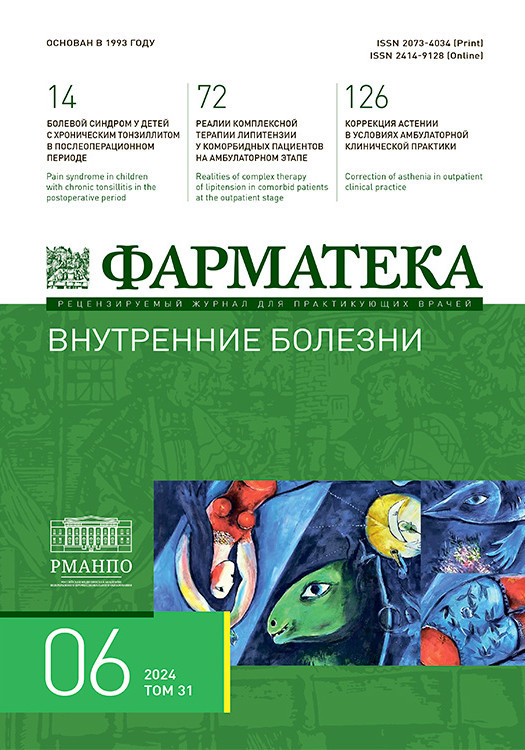Secondary prevention of venous thrombosis. Potential of sulodexide
The issues of secondary prevention of venous thrombosis have not yet been fully resolved. The need for prevention, its duration and the choice of drug remain controversial. The probability of relapse of the disease after discontinuation of anticoagulants, according to different authors, ranges from 2 to 30% depending on the interval after anticoagulant therapy and the localization of the primary thrombotic episode. The duration of long-term prevention varies. To resolve this issue, experts suggest assessing possible risk factors for relapse of venous thromboembolic complications (VTEC), which are usually divided into major and minor, transient (temporary) and persistent. If secondary prevention of VTEC is required in patients with high bleeding risk and the impossibility of prescribing anticoagulant drugs, Russian and foreign clinical guidelines suggest the use of sulodexide. The pharmacological action of the drug is not limited to anticoagulant action, it also has antiplatelet, angioprotective, fibrinolytic properties, there is evidence of a decrease in plasma lipid levels. The antithrombotic effect of sulodexide is associated with an endothelioprotective effect. Sulodexide is currently widely used in medical practice. Analysis of current sources of domestic and foreign literature on the use of sulodexide in venous pathology revealed a wide range of evidence base for this drug, including for secondary prevention of VTEC.Golovanova O.V.
Keywords
venous thromboembolic complications
secondary prevention of venous thrombosis
deep vein thrombosis
sulodexide
endothelium
anticoagulant
post-thrombotic disease
About the Authors
Corresponding author: Olga V. Golovanova, Department of Fundamental and Applied Research in Cardiovascular Surgery, Institute of Surgery, Pirogov Russian National Research Medical University, Moscow, Russia; ovgolovanova@mail.ru; ORCID: https://orcid.org/0000-0002-4035-4386



